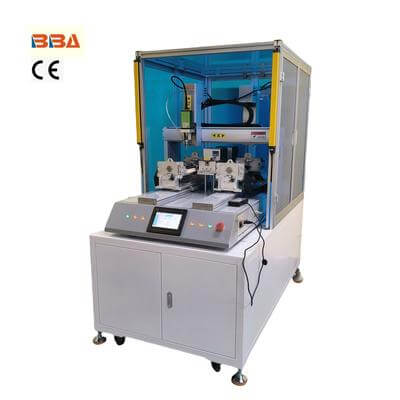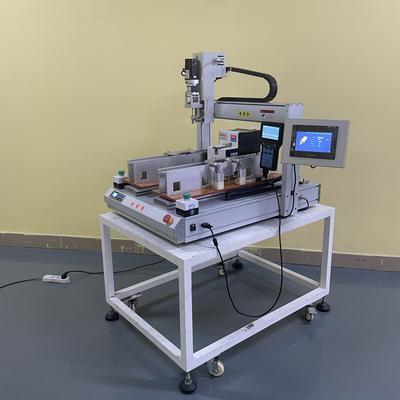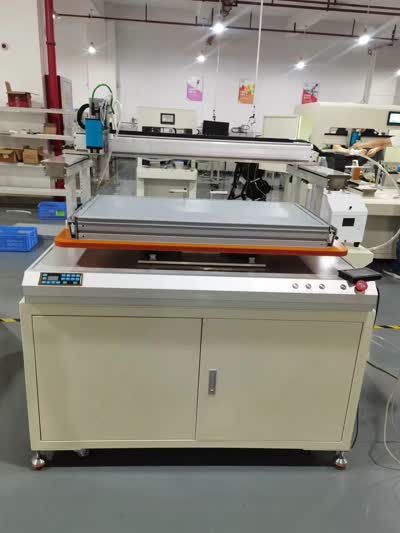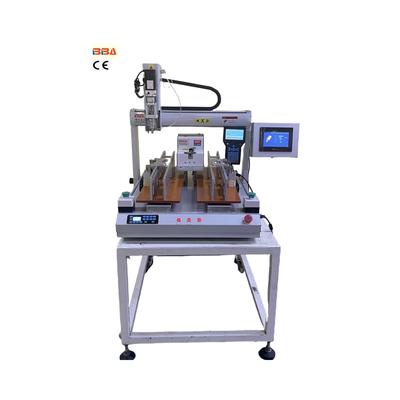Synchronized Motion Control for Multi-Axis Tightening Robots | Precision Assembly
The Critical Dance: Synchronized Motion Control in Multi-Axis Tightening Robots
In the high-stakes world of modern manufacturing, precision assembly is non-negotiable. When tightening multiple fasteners simultaneously on complex assemblies – think critical joints in automotive frames, aerospace structures, or intricate electronic enclosures – traditional single-spindle tools simply can't deliver the required speed or consistency. This is where multi-axis tightening robots revolutionize the process. However, the true magic, enabling the high speed, uncompromising accuracy, and absolute reliability demanded in these applications, lies in advanced Synchronized Motion Control.
Unlike simple sequencing where axes operate independently, synchronized motion is a sophisticated orchestration. Imagine six robotic torque arms converging simultaneously on distinct fastener locations of an engine block. Each axis must not only complete its tightening task perfectly but do so in perfect harmony with its neighbors, ensuring all fasteners reach their precise torque and angle parameters *at virtually the same instant*. This coordination impacts:
- Cycle Time: Synchronization drastically reduces total joint completion time compared to sequential operations.
- Structural Integrity: Simultaneous tightening prevents uneven stress distribution that can warp or damage components.
- Process Stability: Coordinated operation minimizes vibrations and reactive forces that could affect tool accuracy or part positioning.
- Quality Assurance: Guarantees all fasteners on a joint achieve target values together, providing definite pass/fail metrics.
The Technology Enabling Synchronized Precision
Delivering this level of coordination requires a powerful integration of hardware and software:
- Multi-Axis Controller: The central brain. It must possess the processing power to run sophisticated trajectory planning algorithms in real-time for multiple axes simultaneously, often including complex CNC-like interpolation for non-linear paths.
- Precision Servo Systems: High-resolution encoders on motors and torque transducers in the tooling provide continuous, accurate feedback crucial for closed-loop motion and torque control. Motors must offer exceptional responsiveness and minimal torque ripple.
- Synchronization Algorithms: Advanced control algorithms (like EtherCAT often used for deterministic communication) are key. They manage complex kinematics and dynamics, ensuring all axes respond predictably and simultaneously to control signals. Techniques like cross-coupled control compensate for variations between axes.
- Robust Communication Protocols: Deterministic fieldbuses (e.g., EtherCAT, Powerlink, Profinet IRT) are essential, enabling synchronized data exchange between the controller and drives with extremely low jitter. This ensures control loop timing is precise and consistent across all axes.
- Vibration Damping & Compensation: Sophisticated software algorithms dampen mechanical vibrations propagated through the robot structure during rapid movements or tightening events, preventing oscillation and maintaining positional precision.
Beyond Speed: Tangible Benefits
The impact of sophisticated synchronized motion control in multi-axis tightening robots translates into significant competitive advantages:
- Dramatically Reduced Cycle Times: Simultaneous operations unlock significant productivity gains.
- Guaranteed Process Consistency: Unparalleled repeatability eliminates human error and ensures every single product meets the tightening specification precisely.
- Enhanced Product Quality and Reliability: Correct and simultaneous joint clamping directly correlates with product longevity and reduced warranty claims.
- Complex Assembly Flexibility: Enables automation of tightening processes previously considered too complex or time-consuming.
- Detailed Process Data & Traceability: Synchronization provides a holistic view of the joint completion event, offering valuable data for analysis and strict traceability compliance.
- Reduced Fixturing Complexity: Simultaneous clamping can often lessen reliance on massively rigid fixturing, as the tool structure itself helps maintain part alignment during tightening.
The Future of Tightening: Advanced Control Leading the Way
Synchronized motion control is not a static achievement; it's an evolving discipline. Ongoing advancements focus on predictive maintenance integration, using motion data and vibration analysis to foresee potential failures. Machine learning algorithms are also emerging to optimize tightening strategies and predict process deviations in real-time, pushing quality and efficiency to new levels.
For manufacturers seeking to maximize throughput, guarantee quality in the most critical assemblies, and embrace the future of industrial automation, multi-axis tightening robots powered by sophisticated synchronized motion control are becoming an indispensable solution. It’s the precise, coordinated dance of motion that transforms complex fastening challenges into seamless, reliable, and efficient manufacturing reality.


| Product Name | Applicable industries |
| Screw Fastening Unit | Industrial Control Panel Assembly |


